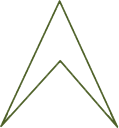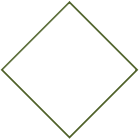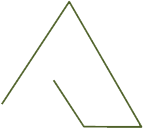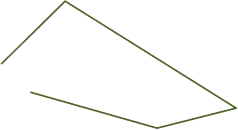What Shape am I?
0
Overview
Using this Resource
Connecting to the Curriculum
Marking Student Responses
Working with Students
Further Resources
This task is about using clues to identify different shapes.
Check below if your final answer was 
Read the clues again. Think about how you will write clues for your buddy for the shape you choose.
- My shape has 4 sides.
- It has two long sides and two short sides.
- The corners are not right angles.
- It has two sets of parallel lines.
- It is an open shape.
Click Next when you're ready to choose your shape and write your clues.
Task administration:
This task is intended to be completed online and has some auto marking displayed to students.
At the end of the resource students are asked to select a shape and write their own clues for a buddy to guess which shape they have chosen.
Levels:
3, 4
Curriculum info:
Key Competencies:
Keywords:
Description of task:
Students identify different shapes from clues about their properties and then create their own clues to share with a buddy.
Curriculum Links:
This resource can be used to help to identify students' understanding of properties of shapes.
Key competencies
This resource involves co-operating and sharing, and reflecting with other students which relates to the Key Competency: Relating to others.
For more information see https://nzcurriculum.tki.org.nz/Key-competencies
Learning Progression Frameworks
This resource can provide evidence of learning associated with within the Mathematics Learning Progressions Frameworks.
Read more about the Learning Progressions Frameworks.Answers/responses:
| Y6 (10/2013) | ||
| a) |

rectangle (8th) - very easy
parallelogram (6th) - moderate
arrow head shape(1st) - difficult
open shape (4th) - difficult
open shape (5th) - very difficult
trapezium (2nd) - very difficult
|
all 6 correct - very difficult
4-5 correct - difficult
2-3 correct - moderate
1 correct - very easy
|
| b) |
 parallelogram (6th) - moderate parallelogram (6th) - moderate
trapezium (2nd) - difficult
arrow head shape (1st) - difficult open shape (5th) - very difficult open shape (4th) - very difficult |
all 5 correct - very difficult
3-4 correct - difficult
1-2 correct - moderate
|
| c) |
 parallelogram (6th) - easy parallelogram (6th) - easyopen shape (4th) - very difficult |
both correct - difficult
1 correct - easy
|
| d) |
 open shape (4th) open shape (4th) |
correct answer - easy |
| e) | Students select a shape and write 3-4 clues that refer to attributes (rather than "what it looks like") | moderate |
Teaching and learning:
This resource involves students looking at the attributes of 2-D shapes. Exploring whether the shape is open or closed, the types of angles (convex or concave) it has, whether it has parallel, right angled, curved or straight lines, and how many and the length of its sides can help students understand better how shapes are classified. Focussing on the attributes/properties of shapes can also break open students' understanding beyond shapes as "icons". For example "a square always looks like..." and "triangles always look like ...". Once these representative icons are in place they can be a barrier to students critically exploring the nature of shapes. These ideas can lead to the misundertstanding that they just always look like ... rather than understanding the details of attributes that define the shapes (and the rules behind these definitions that enable classification).
Diagnostic and formative information:
For this task many students selected only one or some shapes for an attribute, or focussed their answer based on the latest attribute only. This task requires students to hold more than one attribute for consideration when identifying possible shapes, and therefore students need to re-check the previous clues and combine these with the new clue to fully answer the question.
Many students could create very similar clues for their selection of a shape - this question indicates how students can utilise different attributes. Other students could then use the clues and then comment on how they could be improved. This critical reflection reinforces student understanding about what attributes are important and needed to describe distinct shapes. Note that some students referred to a shape "looking "like" something rather than focusing on the shape's attributes.
Examples of student created clues were:
 |
Sufficient clues
|
 |
Sufficient clues
|
 |
Sufficient clues
|
 |
Sufficient clues
|
Insufficient
- 4 corners - two long sides and two short [peer responded "more description" - could still be arrow head shape or parallelogram]
- Straight lines - no right angles - connected [note: connected for closed shape - could still be arrow head shape or parallelogram]
- The shape can be reflected on its self, all the same size lengths and corners. [note the use of reflection - could still be arrow head shape or square]
- My shape has 4 sides and corners. It has a huge middle. [could still be square or parallelogram]
- It has got 3 corners 4 edges and 0 faces. [4 sides and 3 corners suggests one of the open shapes - note the use of edge and face]
- I have four sides, I have 3 vertexes, I dont have right angles [note the use of vertices - could still be either of the open shapes]
- Two long lines. two short lines. broken. has three corners [could still be either of the open shapes]
- This shape has 2 long lines and 2 short lines and it is open [could be either of the open shapes].
Uses comparison to other real objects
- Straight lines, connected, arrow shape
- It has four sides - It has parrallel lines - It's a window
- There are four corners and it looks like an arrow
- I have 4 sides, 4 corners, 1 face - Im in the sky at night ["diamond" = rotated square].
Next steps:
Students who only selected one or few shapes for an attribute, or focussed their answer based on the latest attribute.
These students need to be asked to check if there were any more shapes that met the list of attributes (clues) and possibly justify for each shape why or why not it could be the answer. Students could use a tick list for each iteration to show that they have considered each attribute for each shape. The complete list of clues could be used to create such a list or even some form of table.
To get students thinking about attributes they could explore the resources Sorting shapes and Describing 2-D shapes (both Level 2).
Students who could not write a sufficient set of clues may simply need to play some other types of What am I? type games and get used to making judgements about clues that reduce the selection - even playing the Guess who? game (on iTunes).
Students who identified most (but not all) the answers could be asked to justify why they did not select all the other options. It may well be that students simply did not think they needed to identify as many as they could for each question. Ask these students if there are any other shapes that the clue/statement is also true for.








